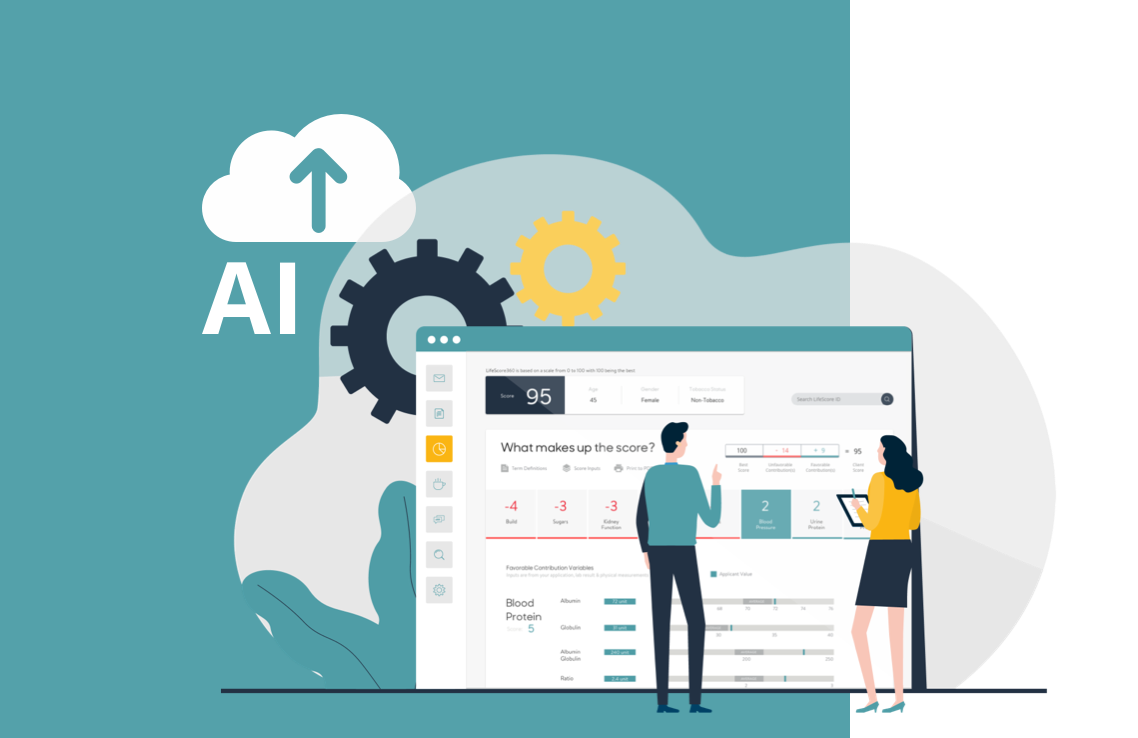4 Characteristics transforming life underwriting

Most of us would like to transform some aspect of our lives. We want to eat better, exercise more, listen, or simply slow down. The life insurance industry is transforming as well, and some companies are more successful than others.
We’ve uncovered four characteristics among carriers, startups, reinsurers, and brokers that have successfully transformed their operations. These characteristics illustrate companies’ understanding of the complex rules, algorithms, models (our sweet spot), and of course, people—the people who underwrite the risk and the people who want to protect their families. This understanding permeates everything they do.
The companies transforming life insurance underwriting have these common characteristics:
-
The belief that customer experience is their North Star (and employee engagement is the rocket)
A Forbes article1 links the employee experience and the customer experience:
Companies with highly engaged employees outperform their competitors by 147%.2
Companies that invest in the employee experience are four times more profitable than those that don’t.3
Companies with a highly engaged workforce experience 19.2% growth in operating income over a 12-month period.4
Companies that lead in customer experience have 60% more engaged employees.5
The customer experience starts with employees. In our industry, this means making sure employees are laser focused on creating an easier, faster, and less invasive experience for a digitally savvy clientele.
But there’s no one-size-fits-all strategy. We’re focused on increasing pass-through rates for candidates who qualify for no-touch policies and leveraging data to help underwriters make the best decisions as quickly as possible. Our talented team of data scientists, software developers, and UX designers can make this possible.
-
Cross-functional teams that leverage life insurance underwriters
While technology, algorithms, and rules engines are replacing many of the decisions life insurance underwriters use to evaluate risk, balancing technology with human involvement and critical thinking are still integral parts of risk selection.
That may be in jeopardy due to a potential shortage of underwriters in the future. A 2020 McKinsey study found that 25% of life insurance employees believe they are within five to ten years of retirement6, and the industry is having trouble attracting new talent.
Companies successfully transforming their operations have invested in automating as many repetitive tasks as possible so underwriters can focus on more valuable activities. Those activities include being part of cross-functional teams that are examining every aspect of the life insurance customer journey.
There are reciprocal benefits for both parties: digital teams have first-hand access to underwriters’ critical thought process, and underwriters are exposed to digital teams and alternative career paths.
-
The view that the life underwriting process is alive
The latest research from LIMRA places the modernization of technology as one of the top three concerns for life insurers.7 The underwriting process should be alive—not Ex Machina alive, but the process and technology should constantly evolve. New tools need to be evaluated as capabilities are developed, creating an endless cycle.
Flexible, open-source APIs make it easy to pilot technology and evaluate its impact without majorly disrupting the existing process. Data from a variety of sources, such as LexisNexis, Milliman, and MIB, as well as prescriptions, fluidless underwriting, lab reports, and EHRs, are essential for underwriters to make the best determinations possible at multiple points in the underwriting process. Companies that embrace this philosophy are better able to make changes, innovate, and transform.
-
Access to lots of data over time
Companies’ ability to test a change in process, model, algorithm, or rule on a historic book of business is often the determining factor in making the change—and a huge competitive advantage.
Could we have passed through more applicants without medical exams?
Should we have taken a closer look at these applicants?
Did we need to get reinsurance to cover these applicants?
Startups that partner with established carriers are at a distinct advantage because they have access to historical data.
Many other characteristics play roles in transforming our industry, but companies that possess these four are leading the change.
1Forbes. The Un-Ignorable Link Between Employee Experience And Customer Experience. Blake Morgan, Feb 23, 2018.
2www.gallup.com/services/190118/engagedworkplace
3Morgan, Jacob. 2017. The Employee Experience Advantage: How to Win the War for Talent by Giving Employees the Workspaces they Want, the Tools they Need, and a Culture They Can Celebrate.
4Decision-Wise. 2020.The ROI of Employee Engagement: Show Me the Money!
5www.blogs.gartner.com/laura-mclellan/10-proof-points-why-customer-experience-is-the-next-big-thing
6McKinsey. The future of life insurance: Reimagining the industry for the decade ahead, 2020.09.29.
7LIMRA & Boston Consulting Group. What’s on the Minds of Global Life Insurance Executives: Responding to the Moment, Looking to the Future. 2021.
CRN202310-284630





